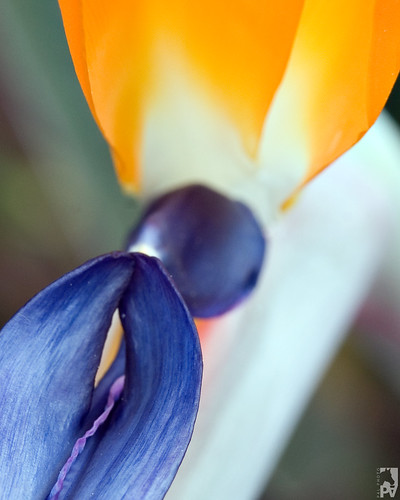
El ave del paraíso, de nombre científico (Strelitzia reginae), es una especie de angiosperma herbácea, rizomatosa originaria de Sudáfrica que se desarrolla cultivada en jardines en regiones tropicales y subtropicales. El término científico de esta planta reginae del Latín = "de la reina", está dedicado a la reina Carlota de Mecklenburgo-Strelitz, esposa del rey Jorge III de Inglaterra, muerta en 1818 y aficionada a la botánica. Planta herbácea semiverde, con forma de mata y hojas con largos pecíolos. Hojas alternas, pinnatinervadas y dísticas.
Su principal atractivo son las flores en forma de pájaro, con pétalos rojos y amarillos.
Las flores son hermafroditas, asimétricas, polinizadas por aves, en grupos cinciniformes protegidos primariamente por grandes brácteas varias laterales y con frecuencia largamente pedunculadas.
El perianto de 3+3 tépalos, los externos iguales y libres, los internos desiguales y generalmente soldados, uno de mayores dimensiones y plegado en forma de flecha rodeando al estilo. El gineceo de 3 carpelos soldados, ovario ínfero, trilocular, numerosos primordios seminales.
Fruto de cápsula valvicida por 3 valvas.
Altura promedio 15 dm y diámetro 18 dm.
_____________________________________________________________________________________
Strelitzia reginae is a monocotyledonous flowering plant indigenous to South Africa. Common names include Strelitzia, Crane Flower or Bird of Paradise, though these names are also collectively applied to other species in the genus Strelitzia. Its scientific name commemorates Charlotte of Mecklenburg-Strelitz, queen consort of King George III.
The plant grows to 2 m (6½ ft) tall, with large, strong leaves 25-70 cm (10-28 in) long and 10-30 cm (4-12 in) broad, produced on petioles up to 1 m (about 40 in) long. The leaves are evergreen and arranged in two ranks, making a fan-shaped crown. The flowers stand above the foliage at the tips of long stalks. The hard, beak-like sheath from which the flower emerges is termed the spathe. This is placed perpendicular to the stem, which gives it the appearance of a bird's head and beak; it makes a durable perch for holding the sunbirds which pollinate the flowers. The flowers, which emerge one at a time from the spathe, consist of three brilliant orange sepals and three purplish-blue petals. Two of the blue petals are joined together to form an arrow-like nectary. When the sunbirds sit to drink the nectar, the petals open to cover their feet in pollen.

No hay comentarios:
Publicar un comentario